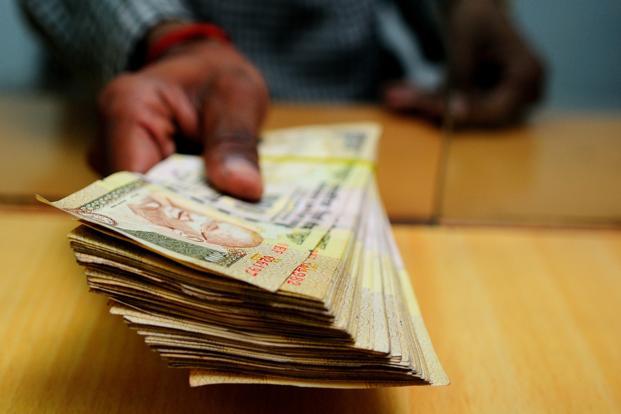A Reserve Bank of India (RBI) working group’s suggestion to create an Indian Banks Base Rate (IBBR) to which all commercial banks can link their loan rates is yet another shot by the regulator to bring in transparency in loan pricing and ensure better transmission of monetary policy. Reset every month, IBBR will be an average of the prevailing base rates of top 14 public sector banks, seven private banks and three foreign banks.
This needs to be done as the existing base rate system has turned into a joke. First, most banks do not change their base rates when RBI changes its policy rate as their cost of funds, they claim, does not necessarily depend on the policy rate. Second, most often the banks do not change their base rates but tweak the spread over the base rate to change the real effective loan rates. As a result, new borrowers get the benefit of lower rates while old borrowers continue to pay higher rates. This happens particularly in the retail segment.
In some sense, IBBR is on the line of LPR (one-year Loan Prime Rate) introduced by People’s Bank of China in October. Published daily, LPR—an average rate of nine commercial banks—is the rate at which all prime borrowers get loans while others pay a little more, depending on their risk profile.
For over two decades now, Indian banking has been in search of an external benchmark rate which is transparent, customer-friendly and reflects changes in the policy rate. Central banks across the globe such as the Bank of England, the US Federal Reserve and the European Central Bank fix their official base rates at periodic intervals, but the London interbank offered rate (Libor) reflects the actual rate at which banks borrow money from each other.
The British Bankers Association uses Thomson Reuters to fix and publish the data daily at around 11.45 am London time. It assembles interbank borrowing rates from a maximum of 16 banks, looks at the middle eight of these rates (discarding the top and bottom four), and uses these to calculate an average to arrive at the day’s Libor. Calculated for seven different maturities and five different currencies, Libor is not based on actual transactions but at what interest rate the panel of banks expects to be able to raise loans in the interbank money market at that moment.
Indian banking lacks an ideal external benchmark on which the banks can base loan rates. Among the available benchmarks, the most prominent is the Mumbai interbank offer rate (Mibor). Developed by the National Stock Exchange of India Ltd in June 1998, Mibor is a benchmark rate for a majority of deals struck for interest rate swaps, forward rate agreements, floating rate debentures and term deposits, apart from overnight call money. It is based on rates polled by NSE from a representative panel of banks and primary dealers that buy and sell government bonds.
Other benchmarks are yield of government securities, the repo rate of RBI at which the central bank lends to commercial banks and money market instruments such as commercial papers and certificate of deposits. But they all depend on the liquidity in the system.
When there is ample money in the system, the rates drop and at a tight liquidity situation, they rise. They also do not reflect the cost of funds for banks, which predominantly depends on public deposits.
Those banks that have higher no-cost current and low-cost savings accounts have lower cost of funds and the banks with higher percentage of term deposits in their liability portfolio pays more.
Despite this, when banks were following the benchmark of Prime Lending Rate (PLR), most had identical PLR and any rate signal by the central bank usually evoked uniform response. Introduced in October 1994, PLR was the rate at which banks used to lend to their top-rated clients and it had no relation to their cost of funds. Sometime early this century, RBI replaced PLR with benchmark PLR (BPLR) that should have factored in the actual cost of funds, operating expenses and the regulatory requirement such as cash reserve ratio or the portion of deposits that banks need to keep with RBI on which they do not earn any interest, provision for bad loans as well as profit margin.
But the banks made a mockery of BPLR by lending to about 70% of their customer at below the benchmark rate. In July 2010, they migrated from BPLR to the base rate system with an explicit understanding that no bank should give any loan below its base rate. Many thought it would be more transparent and fairer to small and medium enterprises (SMEs) that had for so long been subsidizing top-rated corporate borrowers. But that did not happen. While the BPLR was a benchmark rate for all borrowers, the base rate is the rate for the shortest-term loans for the best borrowers and without changing the base rate in sync with policy rates, banks change the spread to jack up their loan rates of lower them.
The way to make the IBBR effective is to base it on the cost of banks’ new deposits and not old ones. In other words, marginal cost of funds and not the weighted average of the existing stock of deposit liability. Besides, to match floating rate loans, all banks should start offering floating rate deposits. Finally, they need to bring down the pile of bad assets. As long as they need to set aside hefty amounts for bad loans, they will not be able to bring down the cost of loans even if the deposit rates come down.



